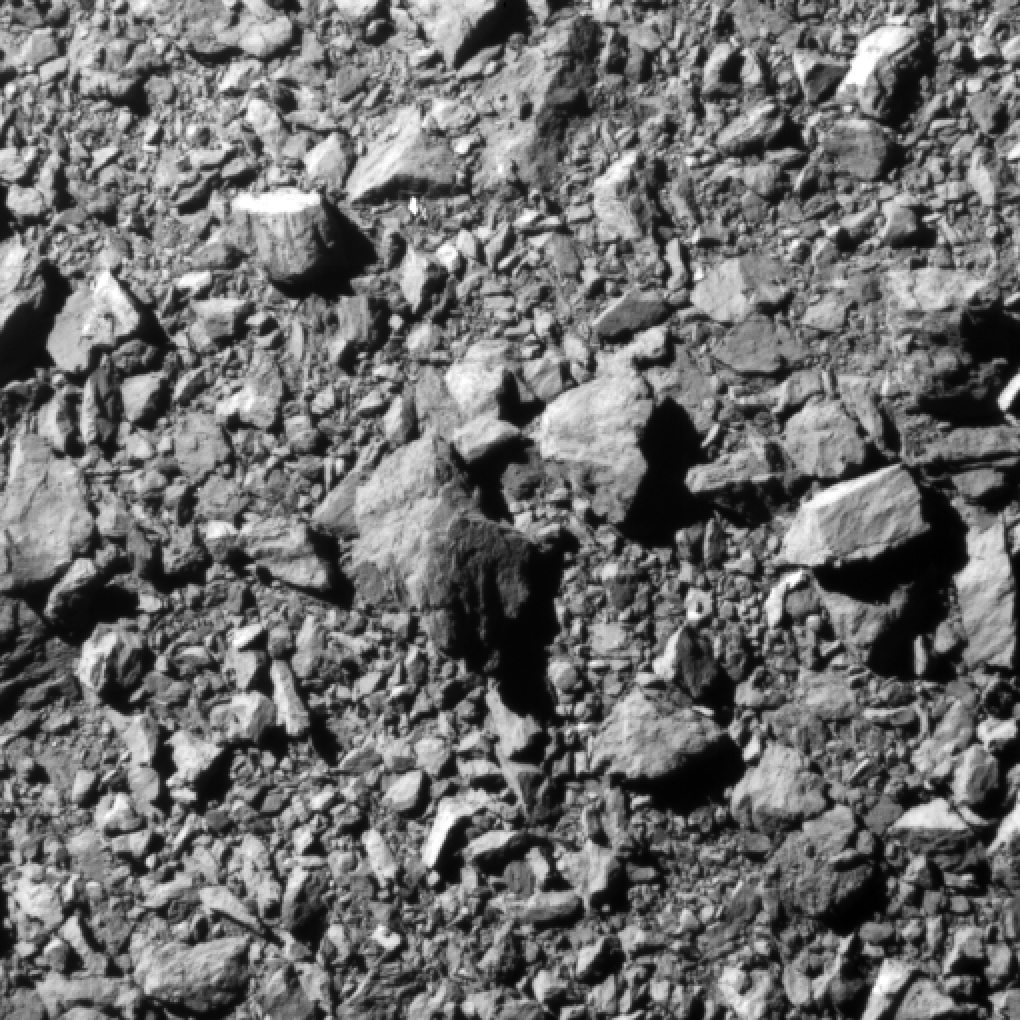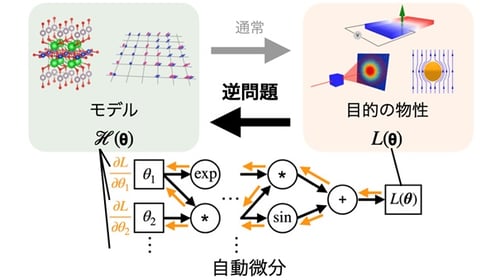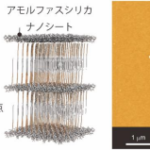2023-03-02 ローレンスリバモア国立研究所(LLNL)
 Final full DRACO image of the DART impact site at Dimorphos, taken 1.818 seconds before the spacecraft’s collision. Image courtesy of NASA/Johns Hopkins University APL.
Final full DRACO image of the DART impact site at Dimorphos, taken 1.818 seconds before the spacecraft’s collision. Image courtesy of NASA/Johns Hopkins University APL.
この研究では、ディモルフォスに与えられた実際の速度と、DARTの衝撃後に研究者が得た運動量について調べました。研究は、ディモルフォスに与えられた速度変化が2.70±0.10mm s-1であり、運動量増加係数βの期待値は、Dimorphosの質量に依存して2.2〜4.9の範囲であることが分かりました。これは、実際の小惑星衝突の緊急事態で運動量転送器が非常に効果的である可能性があることを示しています。
<関連情報>
- https://www.llnl.gov/news/study-looks-velocity-impact-asteroid-dimorphos
- https://www.nature.com/articles/s41586-023-05878-z
小惑星ディモルフォスへのDARTミッションの運動衝突による運動量移動について Momentum Transfer from the DART Mission Kinetic Impact on Asteroid Dimorphos
Andrew F. Cheng,Harrison F. Agrusa,Brent W. Barbee,Alex J. Meyer,Tony L. Farnham,Sabina D. Raducan,Derek C. Richardson,Elisabetta Dotto,Angelo Zinzi,Vincenzo Della Corte,Thomas S. Statler,Steven Chesley,Shantanu P. Naidu,Masatoshi Hirabayashi,Jian-Yang Li,Siegfried Eggl,Olivier S. Barnouin,Nancy L. Chabot,Sidney Chocron,Gareth S. Collins,R. Terik Daly,Thomas M. Davison,Mallory E. DeCoster,Carolyn M. Ernst,Fabio Ferrari,Dawn M. Graninger,Seth A. Jacobson,Martin Jutzi,Kathryn M. Kumamoto,Robert Luther,Joshua R. Lyzhoft,Patrick Michel,Naomi Murdoch,Ryota Nakano,Eric Palmer,Andrew S. Rivkin,Daniel J. Scheeres,Angela M. Stickle,Jessica M. Sunshine,Josep M. Trigo-Rodriguez,Jean-Baptiste Vincent,James D. Walker,Kai Wünnemann,Yun Zhang,Marilena Amoroso,Ivano Bertini,John R. Brucato,Andrea Capannolo,Gabriele Cremonese,Massimo Dall’Ora,Prasanna J. D. Deshapriya,Igor Gai,Pedro H. Hasselmann,Simone Ieva,Gabriele Impresario,Stavro L. Ivanovski,Michèle Lavagna,Alice Lucchetti,Elena M. Epifani,Dario Modenini,Maurizio Pajola,Pasquale Palumbo,Davide Perna,Simone Pirrotta,Giovanni Poggiali,Alessandro Rossi,Paolo Tortora,Marco Zannoni & Giovanni Zanotti
Nature Published:01 March 2023
DOI:https://doi.org/10.1038/s41586-023-05878-z
Abstract
The NASA Double Asteroid Redirection Test (DART) mission performed a kinetic impact on asteroid Dimorphos, the satellite of the binary asteroid (65803) Didymos, at 23:14 UTC on September 26, 2022 as a planetary defense test1. DART was the first hypervelocity impact experiment on an asteroid at size and velocity scales relevant to planetary defense, intended to validate kinetic impact as a means of asteroid deflection. Here we report the first determination of the momentum transferred to an asteroid by kinetic impact. Based on the change in the binary orbit period2, we find an instantaneous reduction in Dimorphos’s along-track orbital velocity component of 2.70 ± 0.10 mm s–1, indicating enhanced momentum transfer due to recoil from ejecta streams produced by the impact3,4. For a Dimorphos bulk density range of 1,500 to 3,300 kg m–3, we find that the expected value of the momentum enhancement factor, β, ranges between 2.2 and 4.9, depending on the mass of Dimorphos. If Dimorphos and Didymos are assumed to have equal densities of 2,400 kg m–3, β=3.61+0.19−0.25(1σ)=3.61−0.25+0.19(1σ). These β values indicate that significantly more momentum was transferred to Dimorphos from the escaping impact ejecta than was incident with DART. Therefore, the DART kinetic impact was highly effective in deflecting the asteroid Dimorphos.



